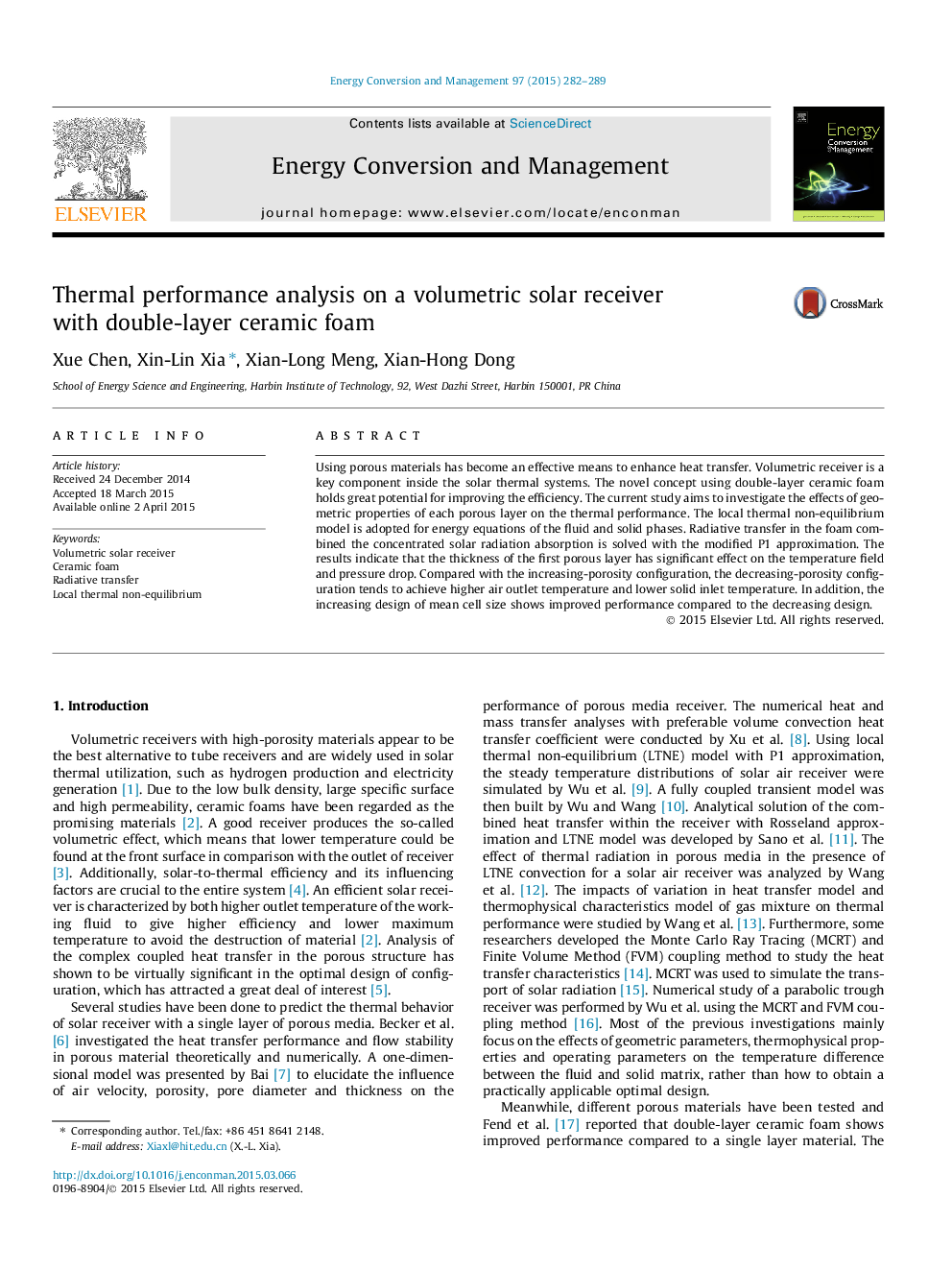| Article ID | Journal | Published Year | Pages | File Type |
|---|---|---|---|---|
| 760591 | Energy Conversion and Management | 2015 | 8 Pages |
•Volumetric solar receiver with double-layer ceramic foam is investigated.•Local thermal non-equilibrium model is adopted to solve the temperature field.•Thickness of the first porous layer affects the temperature field and pressure drop.•Gradual designs of porosity and mean cell size are studied.•The increasing design with large cell size gradient shows improved performance.
Using porous materials has become an effective means to enhance heat transfer. Volumetric receiver is a key component inside the solar thermal systems. The novel concept using double-layer ceramic foam holds great potential for improving the efficiency. The current study aims to investigate the effects of geometric properties of each porous layer on the thermal performance. The local thermal non-equilibrium model is adopted for energy equations of the fluid and solid phases. Radiative transfer in the foam combined the concentrated solar radiation absorption is solved with the modified P1 approximation. The results indicate that the thickness of the first porous layer has significant effect on the temperature field and pressure drop. Compared with the increasing-porosity configuration, the decreasing-porosity configuration tends to achieve higher air outlet temperature and lower solid inlet temperature. In addition, the increasing design of mean cell size shows improved performance compared to the decreasing design.
